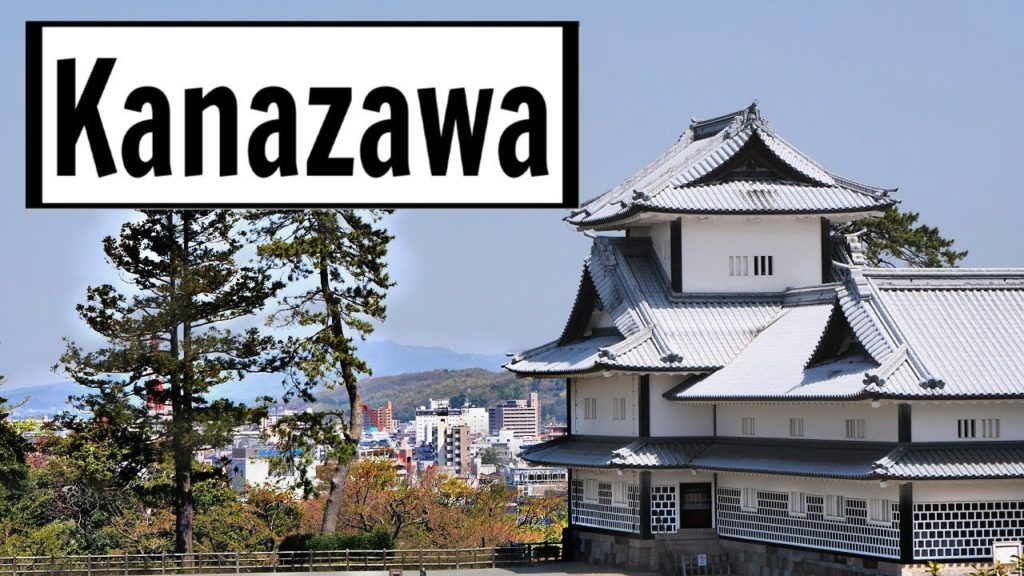Watch me travel my way through Kanazawa, Japan in a whirlwind trip! I’ll show you
This made life 100% better when I was traveling there:
Kanazawa was an ancient merchant town known for its arts & crafts, as well as its giant castle. It’s a beautiful city to add to your Japan travel itinerary!
➜ Get $40 now for AirBNB and live in a charming local apartment and save money over pricey hotels:
➜ Matsumoto Castle video (also in Japan!):
∙∙∙∙∙∙∙∙∙∙∙∙∙∙∙∙∙∙∙∙∙∙∙∙∙∙∙∙∙∙∙∙∙∙∙∙∙∙∙∙∙∙∙∙∙∙∙∙∙∙∙∙∙∙∙∙∙∙∙∙∙∙∙∙∙∙∙∙∙∙∙∙∙∙∙∙∙∙∙∙
➜ Please subscribe for more AWESOME TRAVEL VLOGS:
∙∙∙∙∙∙∙∙∙∙∙∙∙∙∙∙∙∙∙∙∙∙∙∙∙∙∙∙∙∙∙∙∙∙∙∙∙∙∙∙∙∙∙∙∙∙∙∙∙∙∙∙∙∙∙∙∙∙∙∙∙∙∙∙∙∙∙∙∙∙∙∙∙∙∙∙∙∙∙∙
*How do I get to Kanazawa from Tokyo?*
Traveling from Tokyo to Kanazawa only takes 2.5 hours. In March 2015, the Nagano Shinkansen line opened a new train that runs to Kanazawa station. It’s called Hokuriku Shinkansen. I went from Nagano to Kanazawa which only took a little over one hour.
*21st Century Museum of Contemporary Art*
The free part of the museum is an exhibit on cloth. You can feel the different materials used to make a piece of cloth. I believe the exhibit that is offered for free changes all the time. The outside of the museum has pretty interesting pieces you can look at.
*Kanazawa has cherry blossoms!*
If you missed the cherry blossoms you can still catch the Yaezakura cherry blossoms! It is a multi-layered cherry blossom. Because of the different layers the colors range from light to dark pink.
*Things to Do in Kanazawa*
1) When in Kanazawa, you have to try gold leaf ice cream. Kanazawa produces 99% of all gold leaf in Japan.
2) Kanazawa also has a rich tradition of making amazing craft items. This stems from the 15th century where samurai used to rule the land. They didn’t have any wars to fight and were rich in food and land, so they decided to invest many of their resources into arts and crafts.
Today, Kanazawa has over 400 legendary craftsmen dedicated to 36 different types of arts and crafts. Gold leaf, fireworks, umbrellas and fishing lures are some of the specialties of the area.
3) Chaya Area is a lovely neighborhood of beautifully preserved geisha houses. Many have now been converted into restaurants or teahouses. This place reminded me of Gion in Kyoto. Like here it is also a famous geisha district.
4) Kanazawa Castle
From 1583 to the end of the Edo Period, Kanazawa Castle was the seat of the powerful Maeda Clan, a feudal land second only to the Tokugawa’s lands in terms of size and wealth.
The original castle was burnt down and I didn’t bother to pay to go inside. There isn’t much inside compared to Matsumoto castle. If you haven’t seen my trip to Matsumoto remember to go check that out.
Kanazawa Castle Hours
7:00 to 18:00 (March 1 to October 15)
8:00 to 17:00 (October 16 through February)
5) Kanazawa Tea Ceremony
If you want a real tea ceremony experience, they have one here.
This exquisite private garden and tea house was reconstructed based on the original floor plans and opened in 2015. It’s one of the prettiest places in Japan in my opinion, and drinking matcha tea in the tea house while looking out at the view is a special experience.
On Friday and Saturday nights, they open the garden and light it up. I didn’t get to do that this trip but I read that it is a beautiful sight.
6) Omnicho Market
I couldn’t just leave without experiencing this market. So before I left Kanazawa, I had to stop by this market to take a look.
This place reminds me of Nishiki market in Kyoto, just not as big and crowded. It’s also maze like with a bunch of small coordinators snaking around everywhere.
I loved the big, raw oysters here. You can add your sauces on it and it only costs 500 yen. I also got the calm which was disappointing and fishy.
7) Eat Kanazawa Curry
I came here because it was conveniently located inside Kanazawa train station and Go Go curry is a famous brand. I’ve never tried Kanazawa styled curry before. Kanazawa curry has some specific attributes: it needs to be thick and gooey and is often sweet. It’s served with shredded cabbage and curry entirely covers the rice. It’s traditionally eaten in a stainless steel bowl and a fork and a spoon (or even a spork).
∙∙∙∙∙∙∙∙∙∙∙∙∙∙∙∙∙∙∙∙∙∙∙∙∙∙∙∙∙∙∙∙∙∙∙∙∙∙∙∙∙∙∙∙∙∙∙∙∙∙∙∙∙∙∙∙∙∙∙∙∙∙∙∙∙∙∙∙∙∙∙∙∙∙∙∙∙∙∙∙
∙• Instagram (see beautiful travel pics!): @ ∙•
∙• Facebook (connect with me!): •∙
∙∙∙∙∙∙∙∙∙∙∙∙∙∙∙∙∙∙∙∙∙∙∙∙∙∙∙∙∙∙∙∙∙∙∙∙∙∙∙∙∙∙∙∙∙∙∙∙∙∙∙∙∙∙∙∙∙∙∙∙∙∙∙∙∙∙∙∙∙∙∙∙∙∙∙∙∙∙∙∙
➜ Watch more videos from my channel here:
#foodie #restaurants #kanazawa #Japan
Music Provided by:
Little Romantic Piano – Music by Sweet Wave Audio


AloJapan.com